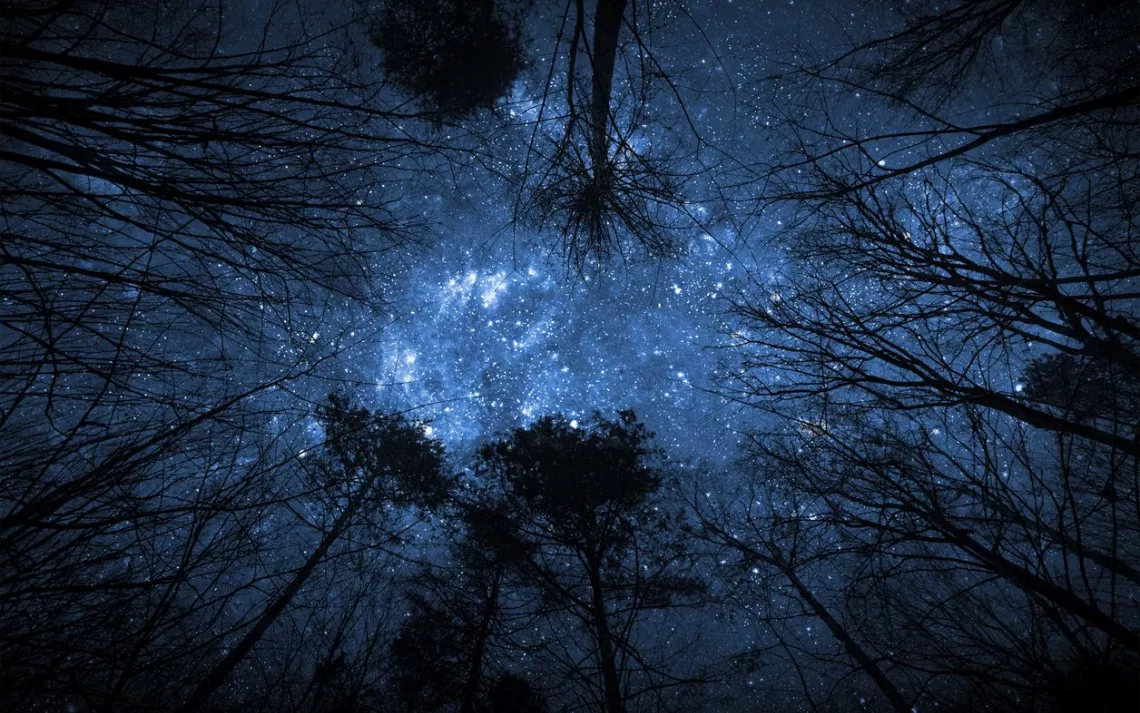December Observing Highlight: Dark Winter Skies And Bright Shining Stars

Surround yourself with the beauty of the winter night sky. | Olegkalina/istock
In the United States, December has more hours of darkness than any other month, and it’s also the most overcast time of year in many places, which means we may not see much of the sun. With the winter solstice on December 21, long nights will rule. So let’s embrace the darkness and take the opportunity to appreciate the night sky.
On December 1, after sunset, a crescent moon will greet us in the southwest as it hangs near Mercury and Venus. Mercury will be very low on the horizon and will be easier to see later in the month. On December 2 and 3, the moon will pass Venus, and on December 4 and 5, it hopscotches over Mars. On December 6, the moon passes in front of—or, in astronomical terms, “occults”—Neptune, but this will happen during daylight hours in many places so the occult won’t be visible for most viewers. That evening as soon as it’s dark, train a telescope on the sky just past the bright glow of the moon’s lit limb to find magnitude 7.8 Neptune amid a sea of stars.
Aldebaran is the brightest star in Taurus the Bull and denotes the “bull’s eye.” It’s a variable star with an approximate magnitude of 0.85, lying 60 light-years from Earth. It has its name, which is Arabic for “follower,” because it trails behind the Pleiades in the sky. As the moon waxes large on December 12, it will float in front of the Hyades star cluster in Taurus, where, in midevening, it occults the bright star Aldebaran. The moon will pass over Aldebaran during the next hour, before spitting it back out on the opposite side. The moon occulted Aldebaran back in October, but that was after midnight, so this earlier event means more people can take a look.
On December 12, look for the hazy patch of stars not far from the moon that sometimes looks like a tiny dipper. This cluster is the Pleiades, one of the best space objects to look at through binoculars. Its wide expanse makes it hard to fit into one field of view in a telescope, so train your binoculars on this star cluster and watch what looks like just a handful of stars resolve into tens more. You might even spot the wispy dust of nebula that surrounds these stars. In fact, 3,000 stars lie in the Pleiades star cluster, which spans 13 light-years and is at a distance of 444 light-years from us; however most of its stars are too dim to see with binoculars.
Before sunrise on December 22, the moon will be close to Jupiter in the southeast. You may also spy some Ursid meteors streaking across the sky on this morning.
The Geminid meteors are normally the best meteor shower of December, but this year the peak of the shower coincides with the full moon, which will wash out the event. The “Long Night Moon” reaches peak fullness at 0:06 UTC on December 14, or 4:06 P.M. PST on December 13.
 The Magazine of The Sierra Club
The Magazine of The Sierra Club



